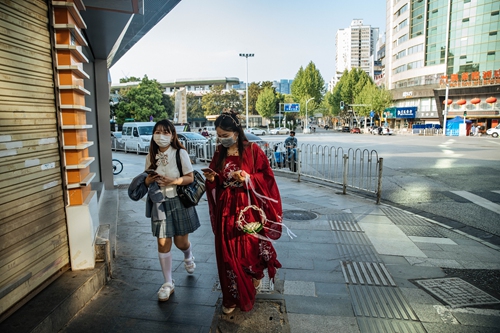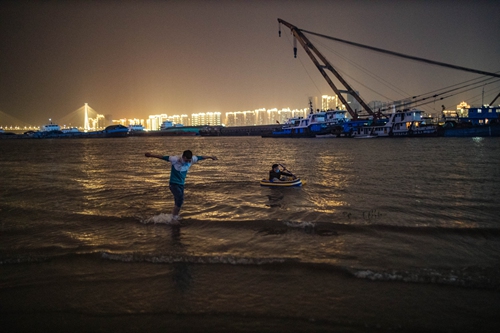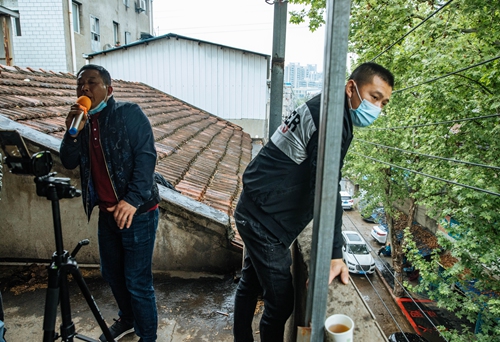
Two women, including one dressed in traditional Han Chinese clothing, walk on the Jiefang Road in Wuhan.(Photo: Li Tao/Global Times)
Wuhan is recovering from its 76-day lockdown after the city was severely hit by the novel coronavirus epidemic, but the city still keeps strict measures to defend its efforts and sacrifices in the past months.
Two weeks have passed since Wuhan, the capital city of Central China's Hubei Province, reopened. Fences are still present in every corner in the city, dividing blocks and communities, as well as reminding residents that virus prevention is still necessary.
Rows of fences have blended in with the background along with residents wearing masks, walking, riding bicycles or doing exercises.

Two men play water along the Yangtze River in Wuhan. (Photo: Li Tao/Global Times)
Some peddlers cut holes through the board fences so they could sell products to consumers, even though business is not booming yet.
Public locations are still under strict administration. To enter a supermarket in Guanggu of Wuhan, consumers must have a green health code to prove that they have a low risk of infection. They are also required to have a temperature under 37.3 C, to wear masks and sterilize their hands.

A man sings with a karaoke app in Wuhan. (Photo: Li Tao/Global Times)
Communities are not opened to all outsiders, the Global Times learned.
Wuhan cannot lower its guard or apply a "one size fits all" measures on preventing the virus, a People's Daily editorial reads. "People must get in the habit of actively confronting the epidemic."
Wuhan has seen no new confirmed COVID-19 case for 17 consecutive days; the city is now capable of conducting nucleic tests for more than 40,000 on a daily basis.
However, it is still under pressure to prevent imported and local cases of COVID-19, like other cities in China. On Monday, China had 11 newly-confirmed COVID-19 cases, with four of them being imported. Six of the cases detected were in Northeast China's Heilongjiang Province, reports said.


